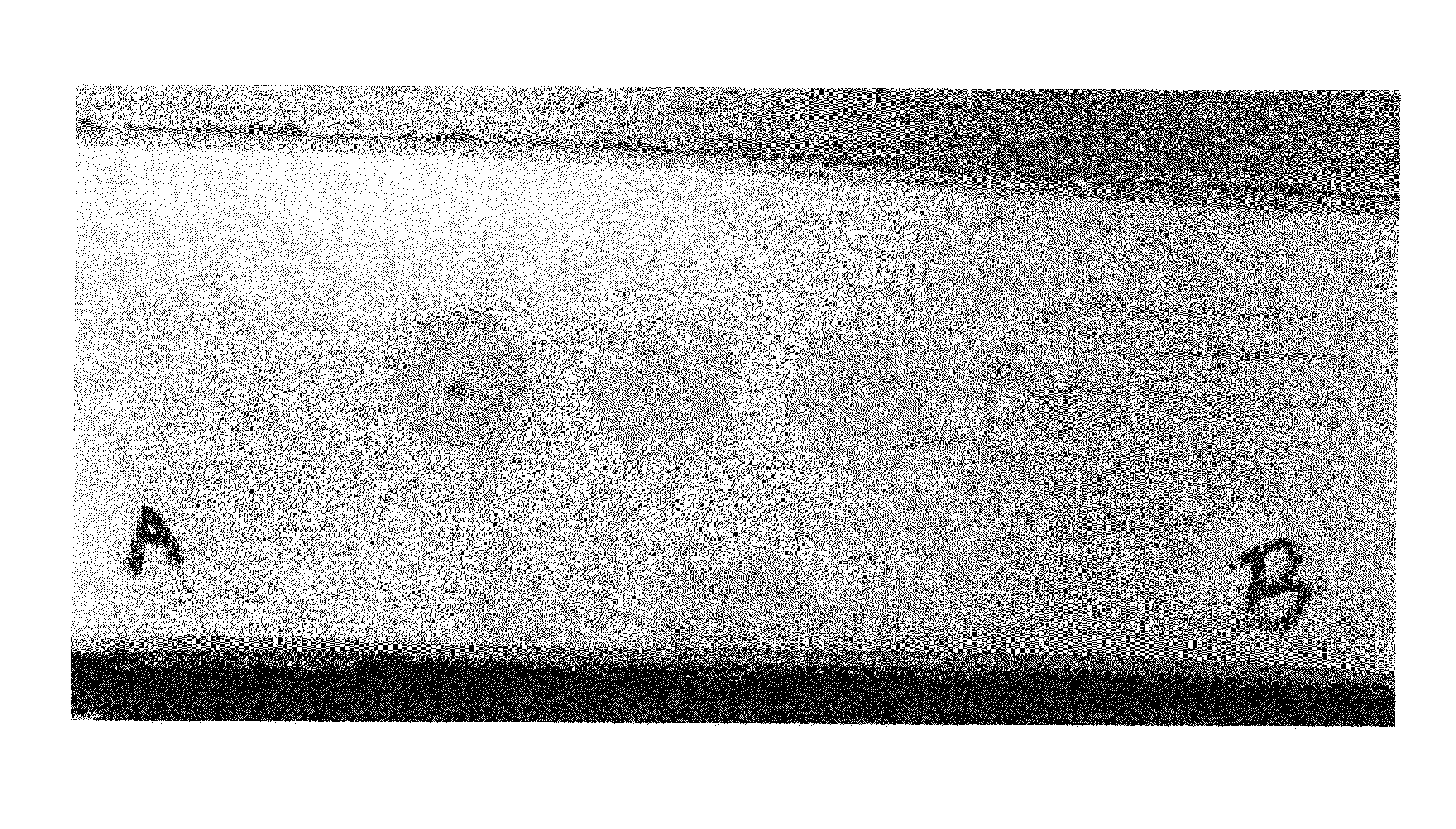Controlling wood staining and color during post-harvest processing
a post-harvest processing and wood staining technology, applied in the direction of pre-treated surfaces, wood treatment details, coatings, etc., can solve the problems of not approaching any study, high obtaining the highly prized dark color, etc., to achieve the effect of darkening the color of wood and reducing the cost of black walnut processing
- Summary
- Abstract
- Description
- Claims
- Application Information
AI Technical Summary
Benefits of technology
Problems solved by technology
Method used
Image
Examples
examples
Basic Experimental Protocols
[0040]A test strip assay was used to apply various test solutions to the surface of freshly cut wood. The strips were made by cutting Plexiglas strips and affixing 5 circular (1 inch diameter) pieces of Whatman filter paper to the Plexiglas support. Control solution (dH20) and four test solutions (hydrogen peroxide urea adduct: CH4N20*H202, Fluka) were applied to the sets strip before it was placed onto the cut wood surface. The test areas were incubated for 5-10 minutes before the strips were removed and pictures taken with a digital camera. In some cases experimental solutions were applied directly to the wood surface. Test solutions that ranged from 1-10% (w:w) and 0.05-1% (w:w) were used. Tests were performed under ambient conditions in a laboratory.
[0041]FIG. 1 shows a photograph of a section of freshly cut sugar maple wood. Four test strip applications were applied to the sample. The four test strips had concentrations, from left to right, 0, 0.5, 1...
PUM
 Login to View More
Login to View More Abstract
Description
Claims
Application Information
 Login to View More
Login to View More - R&D
- Intellectual Property
- Life Sciences
- Materials
- Tech Scout
- Unparalleled Data Quality
- Higher Quality Content
- 60% Fewer Hallucinations
Browse by: Latest US Patents, China's latest patents, Technical Efficacy Thesaurus, Application Domain, Technology Topic, Popular Technical Reports.
© 2025 PatSnap. All rights reserved.Legal|Privacy policy|Modern Slavery Act Transparency Statement|Sitemap|About US| Contact US: help@patsnap.com



